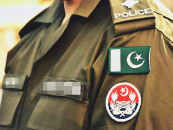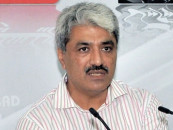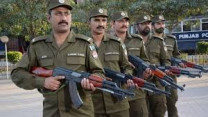Pindi district’s LG bodies slashed to seven
Murree’s municipal committee status abolished

After the promulgation of the new Local Government Act 2022, the Rawalpindi district’s local government set-up has completely changed and the number of local bodies in the Rawalpindi district has reduced from 22 to only seven.
Under the new law, the total number of neighbourhood councils of the Rawalpindi Metropolitan Corporation (RMC) has increased from 46 to 98 while the total number of village councils in the district council has increased to 106. The municipal committee status of Murree has also been abolished and it has been declared a unit of the Rawalpindi District Council.
With the new delimitation, the total number of neighbourhood councils and village councils in Rawalpindi has increased to 228, including 122 neighbourhood councils and 106 village councils. The Rawalpindi District Council will have 106 village councils.
Earlier, the Rawalpindi district was divided into 22 local bodies which comprised of one municipal corporation, seven tehsil councils, seven municipal committees, one district council, one town council and five Cantonment boards.
Under the new system, seven metropolitan units of the Rawalpindi district including one district council, one metropolitan corporation and five Cantonment boards (Rawalpindi, Chaklala, Murree, Taxila, Wah Cantt) have become seven local government units. Under the new law, tehsil councils, municipal committees and town committees (Doltala) have been abolished.
A lord mayor will be the head of the RMC while the district mayor will be the head of the district council. The district council will have one deputy district mayor from each tehsil. These deputy district mayors will be selected from Murree, Kotli Sattian, Kahota, Kallar Syedan, Gujjar Khan and Taxila tehsils. The constituencies of the deputy mayors will be the rural areas of each tehsil.
The district council will have a full cabinet. According to the district election commission office, the urban population of Rawalpindi district has increased to 2,410,000 and the rural population to 1,595,748. The population of Cantonment areas is separate. The Parks and Horticulture Authority, the Rawalpindi Development Authority and the WASA will be under the control of the lord mayor.
As per the delimitation, there will be 98 neighbourhoods councils in the RMC, two neighbourhood councils, 21 village councils in Murree, three neighbourhood councils, nine village councils in Kotli Sattian, four neighbourhood councils, 12 village councils in Kahuta, four neighbourhood councils, 10 village councils in Kalar Sayedan, six neighbourhood councils, 28 village councils in Gujjar Khan, 17 village councils in Rawalpindi and four neighbourhood councils, nine village councils in Taxila.
Published in The Express Tribune, September 16th, 2022.



















COMMENTS
Comments are moderated and generally will be posted if they are on-topic and not abusive.
For more information, please see our Comments FAQ